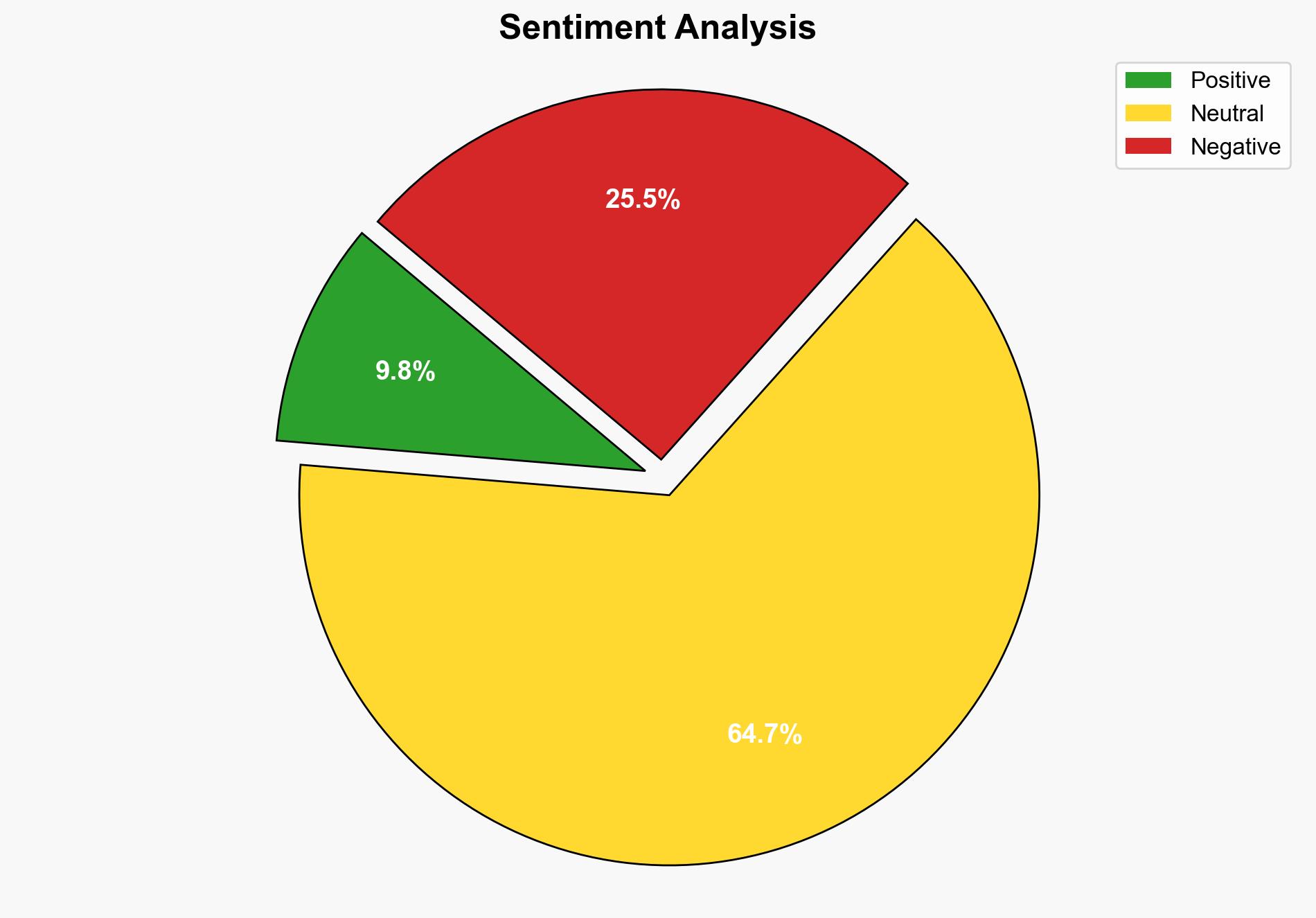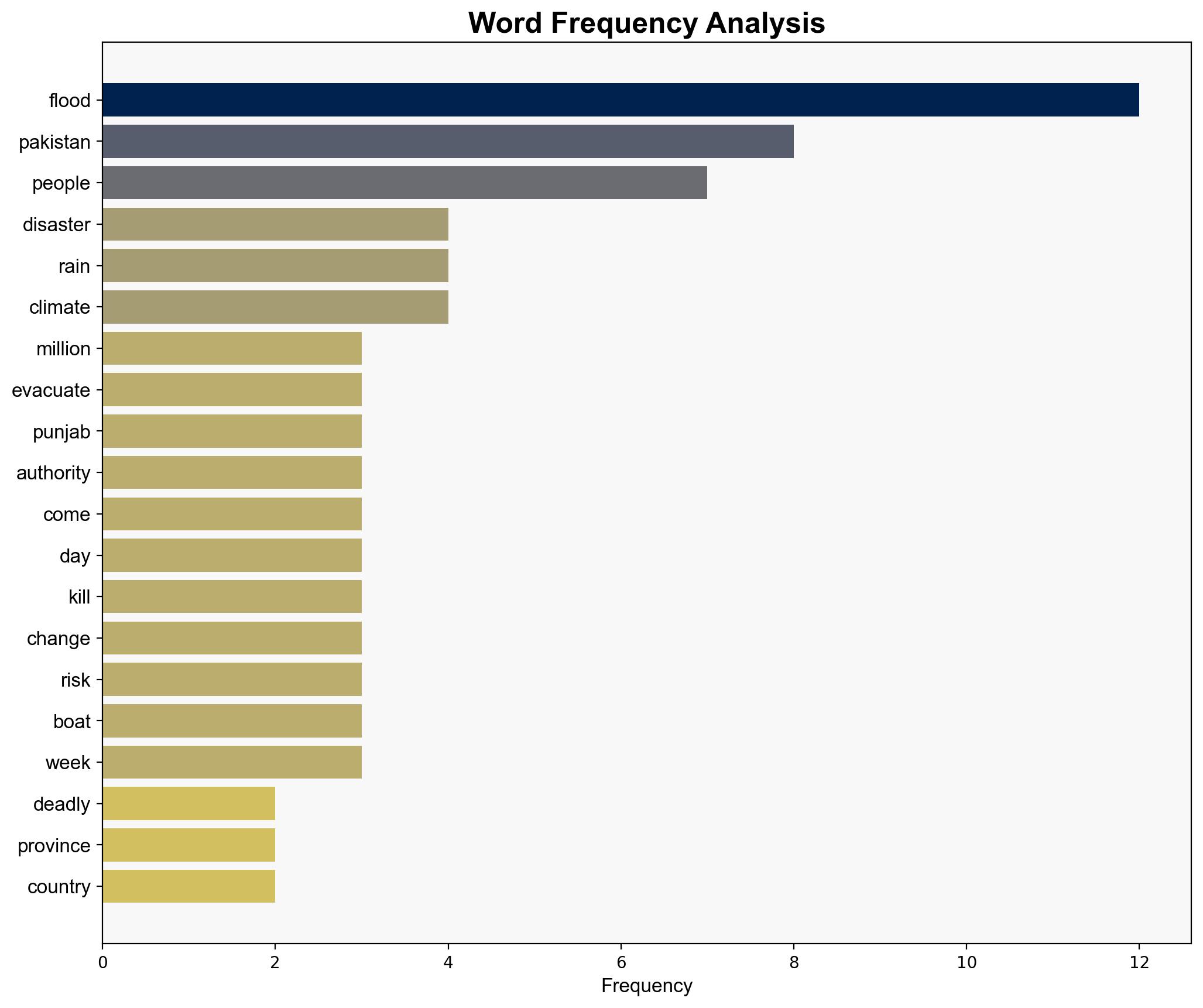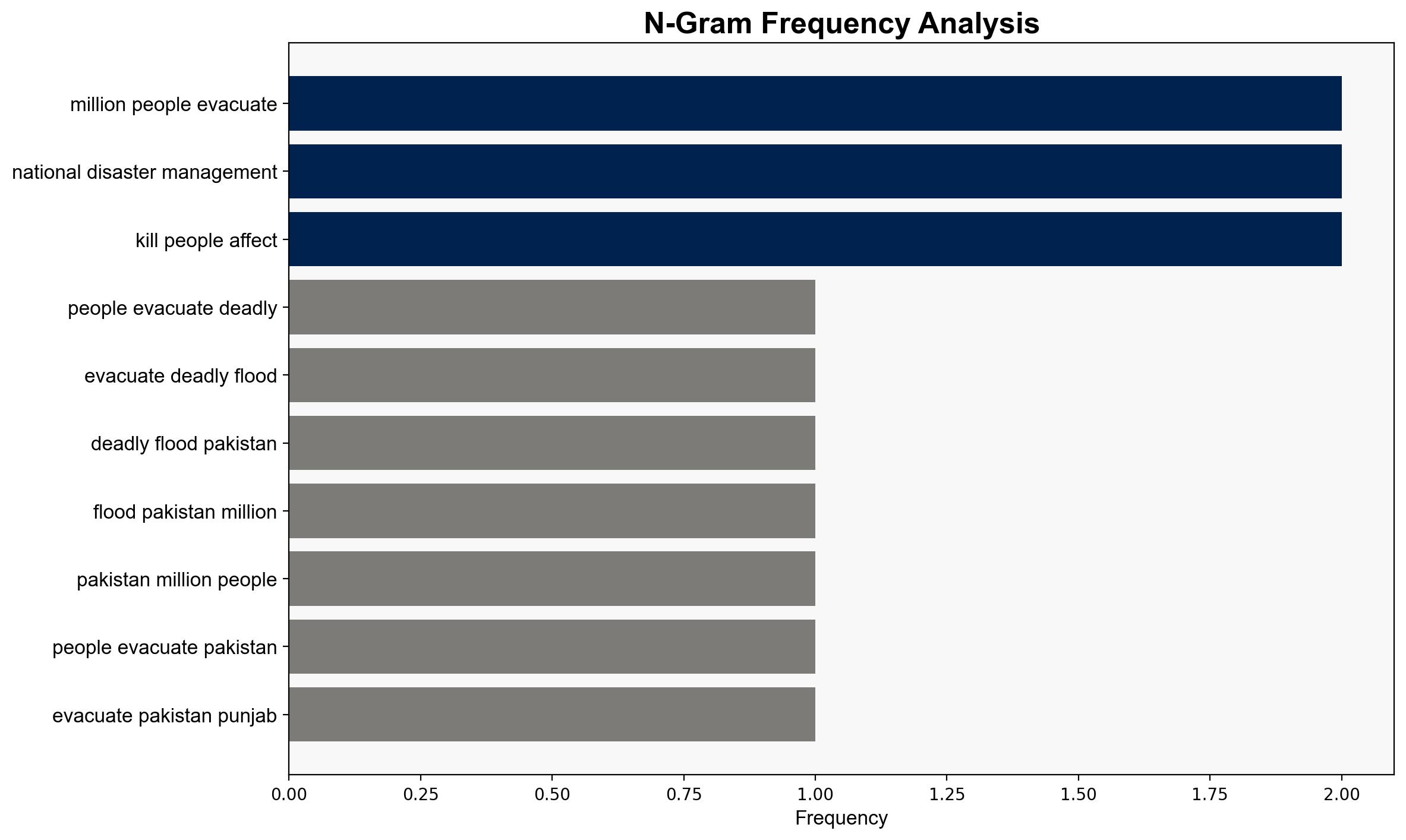More than two million people evacuated from deadly floods in Pakistan – BBC News
Published on: 2025-09-12
Intelligence Report: More than two million people evacuated from deadly floods in Pakistan – BBC News
1. BLUF (Bottom Line Up Front)
The most supported hypothesis is that climate change, compounded by inadequate government infrastructure and disaster preparedness, is the primary driver of the devastating floods in Pakistan. This conclusion is drawn with a moderate confidence level due to the complexity of climate-related impacts and the variability of local governance responses. Strategic recommendation includes enhancing international cooperation for climate resilience and immediate investment in disaster mitigation infrastructure.
2. Competing Hypotheses
1. **Hypothesis A**: The floods are primarily a result of climate change, exacerbated by inadequate government investment in disaster mitigation and alert systems.
2. **Hypothesis B**: The floods are primarily due to natural weather patterns and geographical vulnerabilities, with climate change and governance issues playing a secondary role.
Using the Analysis of Competing Hypotheses (ACH) 2.0, Hypothesis A is better supported by the evidence of increased monsoon intensity and glacial melt linked to climate change, alongside reports of insufficient infrastructure and alert systems.
3. Key Assumptions and Red Flags
– **Assumptions**: It is assumed that climate change is the primary driver of increased monsoon intensity. Another assumption is that government investment has been insufficient, based on historical data.
– **Red Flags**: Potential bias in attributing all flood impacts to climate change without considering natural variability. Lack of detailed data on specific government actions or investments in disaster preparedness.
4. Implications and Strategic Risks
The ongoing floods pose significant risks, including economic destabilization due to agricultural losses, increased poverty, and potential political instability. The humanitarian crisis could exacerbate regional tensions, particularly with neighboring India, which is also affected. There is a risk of increased migration and potential exploitation by extremist groups in destabilized regions.
5. Recommendations and Outlook
- Immediate international aid and technical support for flood relief and infrastructure rebuilding.
- Long-term investment in climate adaptation strategies, including improved water management and early warning systems.
- Scenario Projections:
- **Best Case**: Rapid international response mitigates immediate impacts, and long-term investments reduce future vulnerabilities.
- **Worst Case**: Continued extreme weather events lead to severe economic and political instability, exacerbating regional tensions.
- **Most Likely**: Gradual recovery with ongoing challenges in infrastructure and governance, requiring sustained international support.
6. Key Individuals and Entities
– Inam Haider Malik
– Shehbaz Sharif
– National Disaster Management Authority
– International Medical Corps
7. Thematic Tags
climate change, disaster management, regional stability, humanitarian crisis




